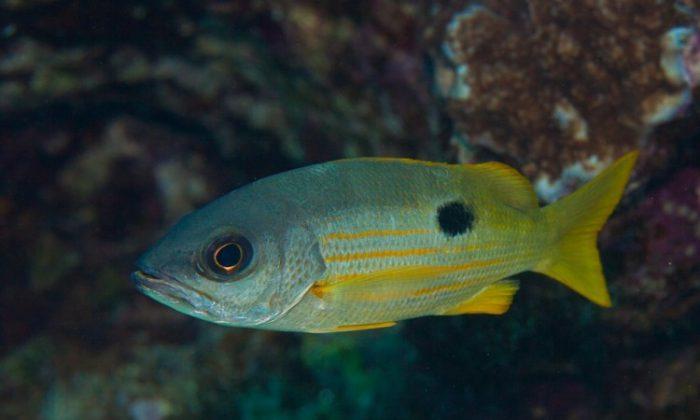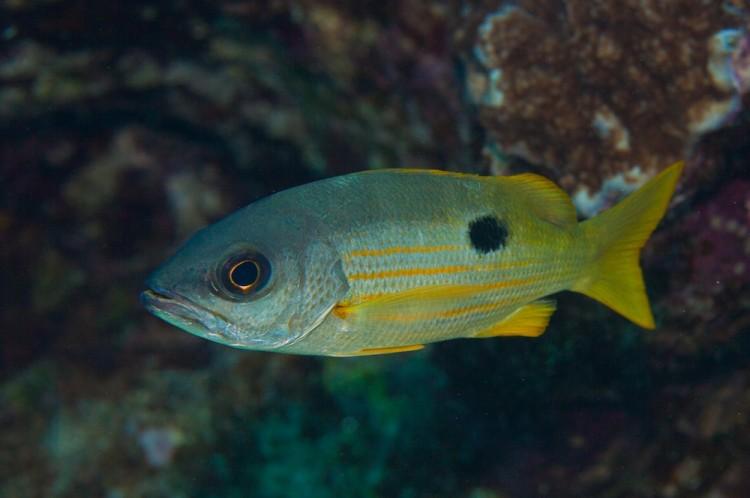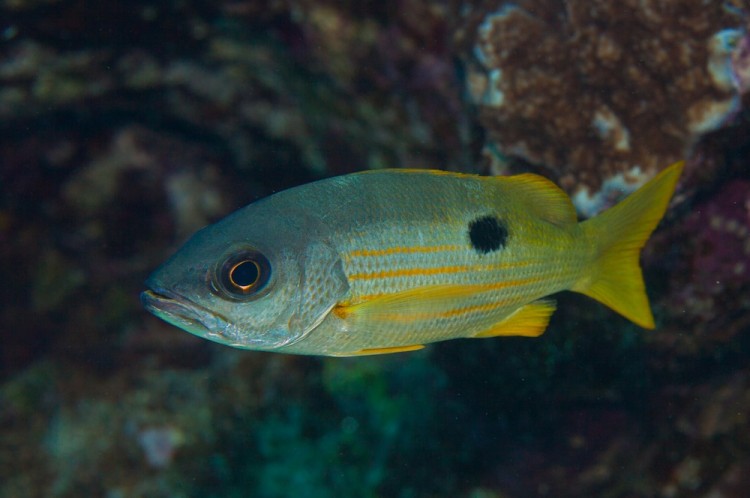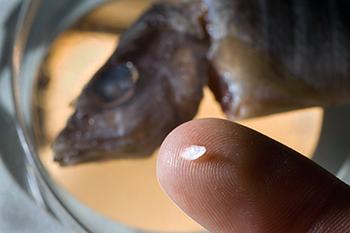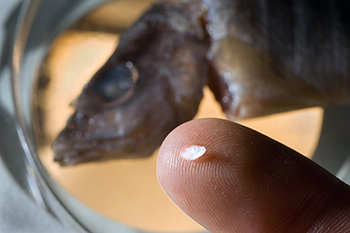Migration of juvenile reef fish from coastal seagrass beds and mangroves to coral reefs is much more complex than previously realized, according to a new study in the Red Sea off Saudi Arabia.
The researchers used a new quantitative method to identify the nursery habitats of Ehrenberg’s snapper, Lutjanus ehrenbergii, from chemical isotopes in their otoliths or ear bones.
The isotopes are laid down in the growing fish rather like tree rings and record the chemical composition of their environment and food.
“The rationale for this study was to determine the relative importance of different nursery habitats to reef fishes that spend their adult lives on coral reefs but may spend at least part of their juvenile residency elsewhere,” explained study co-author Simon Thorrold at Woods Hole Oceanographic Institution (WHOI) in a press release.
“Otoliths are constantly and permanently recording the conditions a fish is experiencing at any time.”
The team made a map of isotope signatures in five habitats—coastal wetlands, coastal reefs, reefs on the continental shelf down to 60 meters (nearly 200 feet), patch reefs around offshore islands, and oceanic reefs in open water.
“We found that a number of juveniles had settled directly onto reefs, despite the fact that in several years of regular work in this area, we'd never visually observed them there,” Thorrold said. “... Some fish settle right on the reefs, and the continental island proved to be very important habitat as well.”
The results showed complexity in the use of habitats and movement between them, including unexpected long-distance migrations from wetlands to deep open water.
“Protecting the reef protects the adult fishes, but not an important component of their life history as juveniles,” Thorrold concluded.
“It won’t work to protect the reef, but for example allow a hotel to be built on the seagrass beds and mangroves.”
The study was published in Proceedings of the National Academy of Sciences on Sept. 3.
The Epoch Times publishes in 35 countries and in 19 languages. Subscribe to our e-newsletter.
